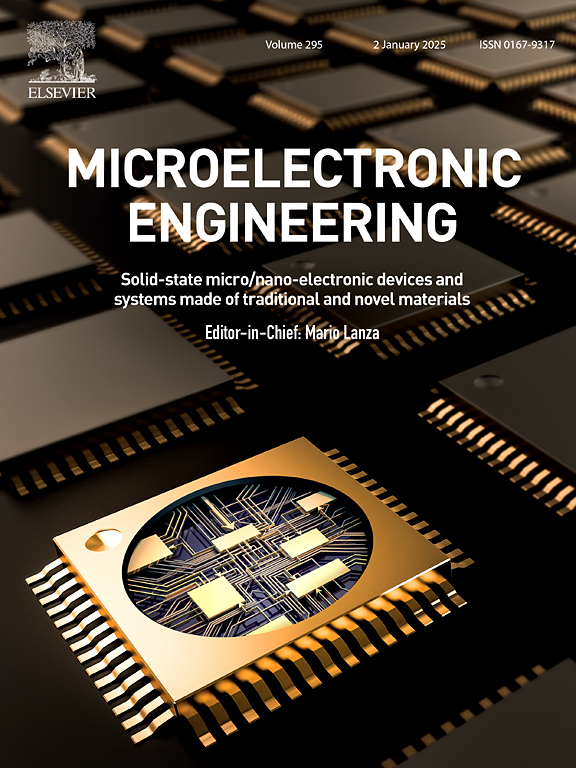Impact of Bias temperature instability on reconfigurable field effect transistors and circuits
IF 3.1
4区 工程技术
Q2 ENGINEERING, ELECTRICAL & ELECTRONIC
引用次数: 0
Abstract
Assessing the reliability of emerging device technologies is of fundamental importance to facilitate their adoption in larger scale electronic circuits and systems. This is even more true for all those devices whose unique behavior paves the way towards innovative circuit solutions, but also poses new reliability concerns that are not well known as in established technologies such as CMOS. In this paper, we thoroughly discuss the bias temperature instability (BTI) reliability features of three-independent-gate reconfigurable field effect transistors (RFETs). This multi-gate transistor technology is characterized by the unique feature of providing volatile polarity and threshold control within an individual device. While these devices are subjected to positive and negative BTI in alternating fashion during circuit operation, we identified negative BTI to be the worst-case condition with respect to performance degradation of RFETs in terms of threshold voltage shift and sub-threshold slope reduction. In addition we could reveal clear phenomenological differences in the degradation if the stress profiles are applied to the gates that turn on and off the transistors, rather than when they are applied to the ones that program their polarity. Positive BTI generally produces negligible effects on the threshold voltage shifts, while it has a certain impact on the sub-threshold slope degradation of one of the operational modes of the considered transistors.
偏置温度不稳定性对可重构场效应晶体管和电路的影响
评估新兴器件技术的可靠性对于促进它们在更大规模的电子电路和系统中的采用具有至关重要的意义。对于所有那些独特的行为为创新电路解决方案铺平道路的设备来说,情况更是如此,但同时也提出了新的可靠性问题,这些问题在CMOS等成熟技术中并不为人所知。本文深入讨论了三独立栅极可重构场效应晶体管(rfet)的偏置温度不稳定性(BTI)可靠性特征。这种多栅极晶体管技术的特点是在单个器件内提供易失极性和阈值控制的独特功能。虽然这些器件在电路运行期间以交替的方式受到正BTI和负BTI,但我们确定负BTI是关于rfet在阈值电压移位和亚阈值斜率降低方面的性能下降的最坏情况。此外,如果将应力剖面应用于打开和关闭晶体管的门,而不是应用于编程其极性的门,我们可以揭示在退化中明显的现象学差异。正BTI通常对阈值电压位移的影响可以忽略不计,而对所考虑的晶体管的一种工作模式的亚阈值斜率退化有一定的影响。
本文章由计算机程序翻译,如有差异,请以英文原文为准。
求助全文
约1分钟内获得全文
求助全文
来源期刊

Microelectronic Engineering
工程技术-工程:电子与电气
CiteScore
5.30
自引率
4.30%
发文量
131
审稿时长
29 days
期刊介绍:
Microelectronic Engineering is the premier nanoprocessing, and nanotechnology journal focusing on fabrication of electronic, photonic, bioelectronic, electromechanic and fluidic devices and systems, and their applications in the broad areas of electronics, photonics, energy, life sciences, and environment. It covers also the expanding interdisciplinary field of "more than Moore" and "beyond Moore" integrated nanoelectronics / photonics and micro-/nano-/bio-systems. Through its unique mixture of peer-reviewed articles, reviews, accelerated publications, short and Technical notes, and the latest research news on key developments, Microelectronic Engineering provides comprehensive coverage of this exciting, interdisciplinary and dynamic new field for researchers in academia and professionals in industry.
 求助内容:
求助内容: 应助结果提醒方式:
应助结果提醒方式:


